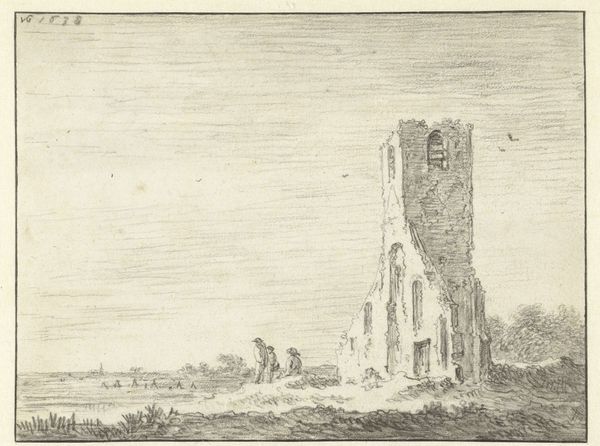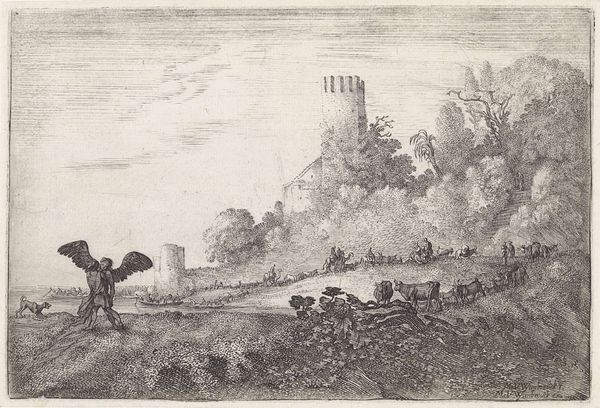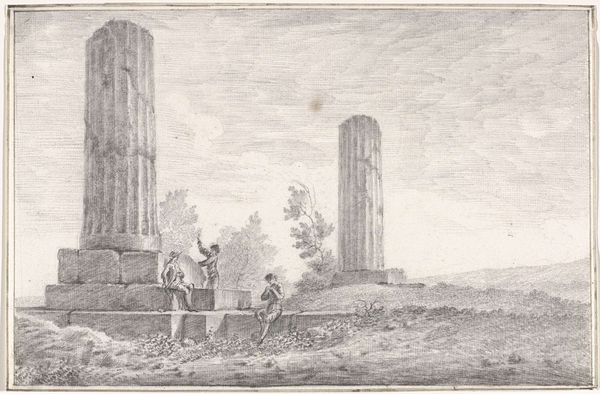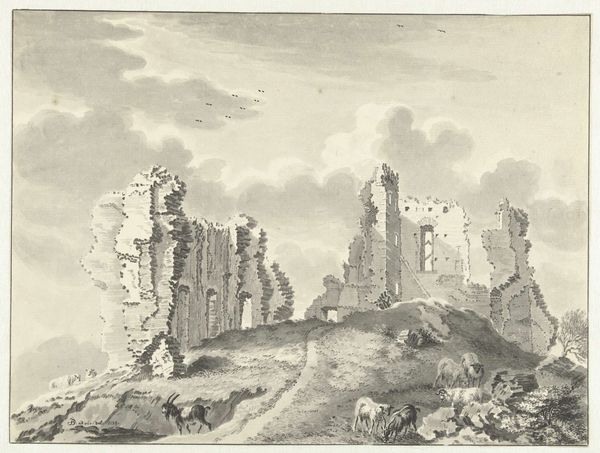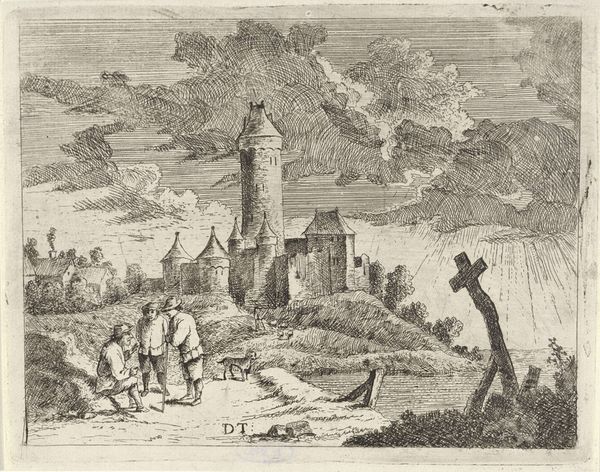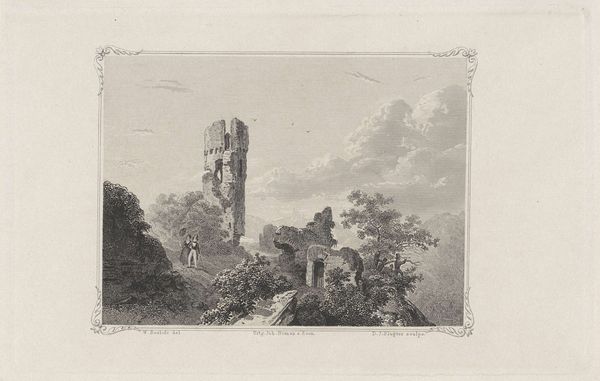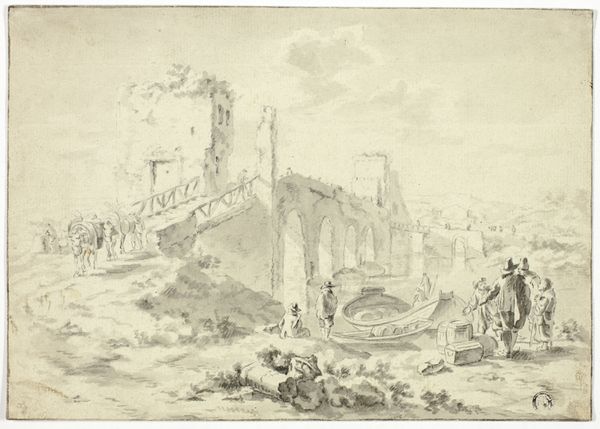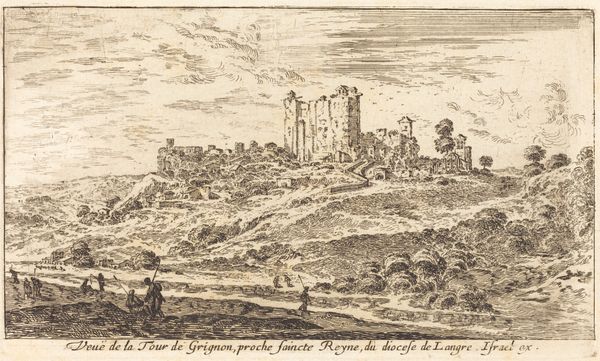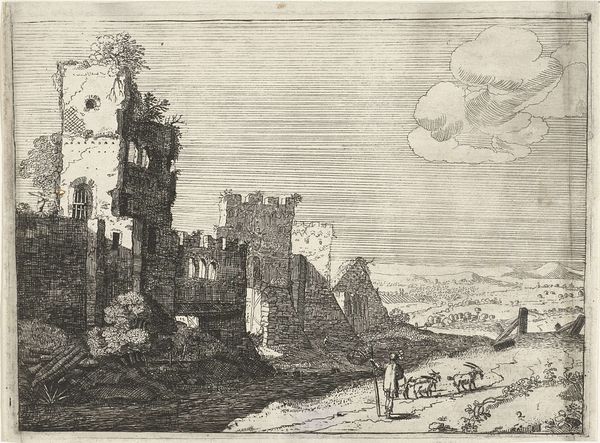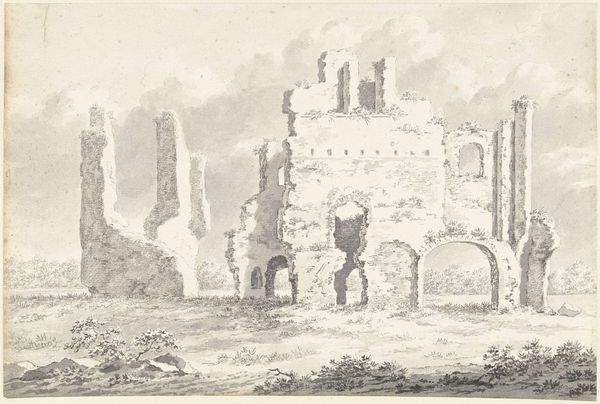
print, etching, architecture
#
baroque
# print
#
etching
#
landscape
#
cityscape
#
architecture
Dimensions: height 121 mm, width 185 mm
Copyright: Rijks Museum: Open Domain
Curator: Moyses van Wtenbrouck’s etching, “Landscape with two obelisks and the ‘Torre delle Militie’”, believed to be created between 1600 and 1647, presents a rather striking visual arrangement. Editor: There is a certain melancholy embedded in the image’s composition. It evokes a kind of classical ruin scene with its stark, linear presentation of a decayed landscape. Curator: Indeed. Note the precise articulation of the architectural elements. Wtenbrouck masterfully uses line and shadow to create depth. Look at the textures of the aging stone contrasted against the flatness of the sky—a dialogue between form and void. The semiotic implications of contrasting these archaic signifiers opens up an expansive dialogue regarding humanity, death, and impermanence. Editor: The labor and skill involved in the copperplate etching technique adds to the richness of its historical context. The materiality of printmaking--metal plates, acids, paper—provides a crucial lens. Here, the means of production are intricately tied to both economic systems and social conditions, don’t you think? How might accessibility through print impacted art viewership at that time? Curator: Undoubtedly, the method democratized the consumption of such imagery; nonetheless, the interplay of form maintains hierarchical significance in how the narrative unfolds for a reading public. The obelisks for instance—paired and punctuating—draw the eye vertically to meet that rather ominous dot in the atmosphere, reifying a divine ordering of the pictorial space. Editor: Perhaps...or maybe that's the plate maker showing us what can be achieved through control of material limits. Ultimately the economic investment needed in the tools, not just talent alone, also set certain class boundaries of creation in place, subtly revealing production contexts during a pivotal stage of expanding capital economies. Curator: Fascinating. The landscape offers us diverse, potentially contrary interpretations. Its stark formal contrasts really stay with you, though, don't they? Editor: Absolutely, and its materiality provides additional ways of understanding historical production networks we should be keen to account for today.
Comments
No comments
Be the first to comment and join the conversation on the ultimate creative platform.

